Camera Lens Guide For Beginners
Now that the pandemic is over, we are much more interested in taking photos to keep as personal memories. This gave us a huge career opportunity because many young people today want to work as photographers, videographers, bloggers, or anything else associated with this industry.
But the point is that you need a good camera and a variety of lenses for this field, and lenses aren't cheap—they're pretty pricey. Are you still uncertain that you must purchase the best lens from which you can derive the most significant benefit? You no longer need to worry if you are unsure of which lens to buy or what you will see through a particular lens.
Please read this article; every question you have will be addressed appropriately. Only then can you decide which lens is best for you.
What is a Lens?
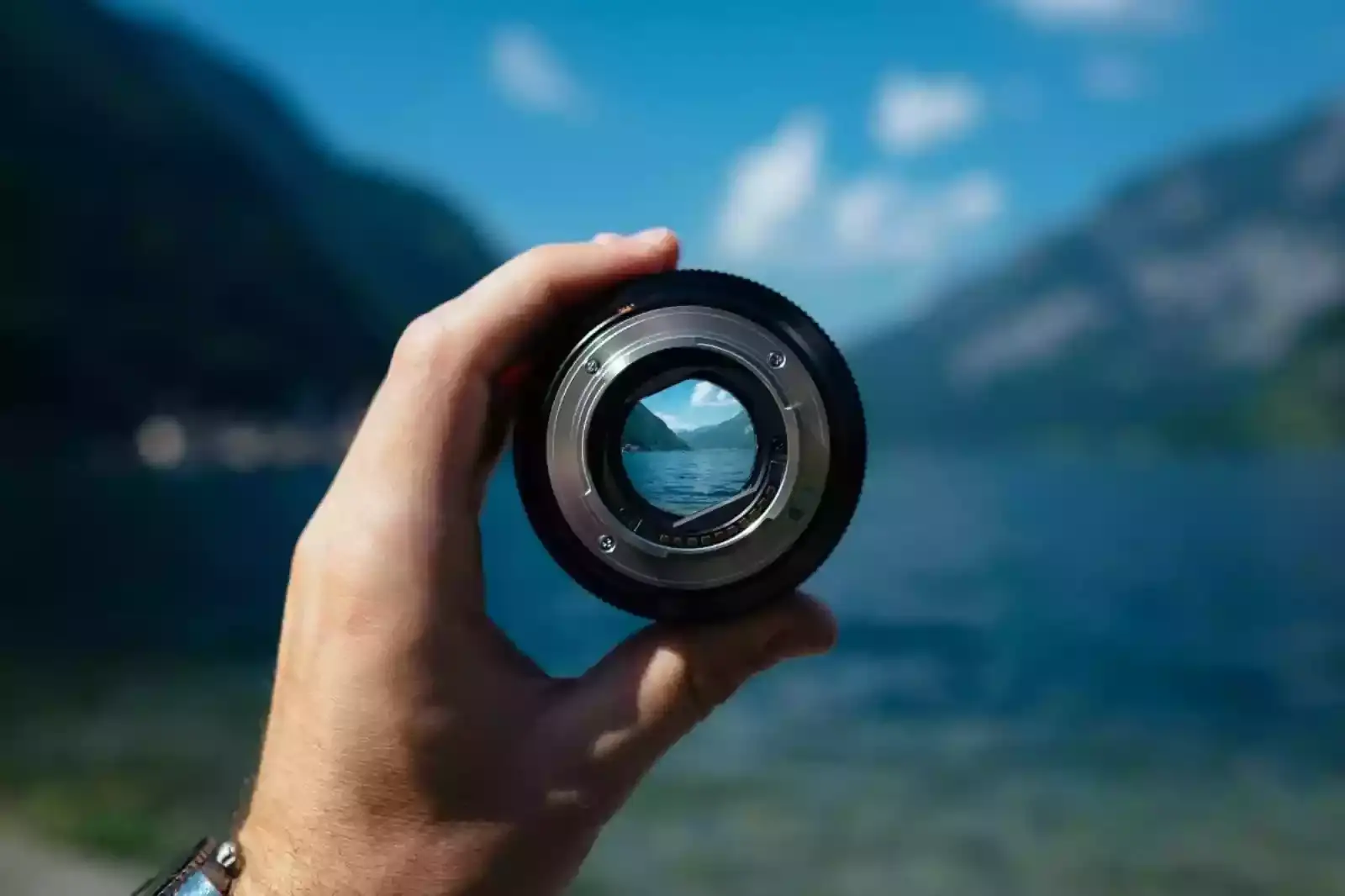
An optical component with a single lens or a group of lenses that mounts to a camera body is called a camera lens. While some lenses may be changed, others are built into the camera body.
Part of the lens-
1) Filter Thread
%2520Filter%2520Thread.webp)
A threaded feature on the front of almost all lenses enables you to screw on filters to create specific effects. The diameter of the filter thread should be specified in the lens's specs, and you can buy filters with the same diameter.
The standard thread sizes are 82mm, 77mm, 72mm, and 52mm. A step-down ring that converts one diameter to another can be used to utilize a filter with a lens with a filter thread diameter different from your own.
Getting a filter to fit your giant lens is recommended if you want to purchase filters for only some of the different sizes of lenses you already own. The large filter may then be fitted to your smaller lenses using step-up rings.
The front element's size supports the field of view and maximum aperture. Since the aperture is computed as a proportion of the focal length, a longer lens requires a physically larger aperture to achieve the same F-stop.
The size of the front lens element is not directly related to the lens's angle of view, albeit it is a factor. That is more of a consequence of the curvature of the front lens element since an enormous curve increases the angle of incident light that may be collected and bent by the lens.
A lens's "speed," or maximum aperture, maybe more accurately predicted by measuring the front lens element's diameter. The lens tube has to be more expansive as the focal length (f) increases.
2) Lens hood Thread
%2520Lens%2520hood%2520Thread.webp)
Lens flare is reduced in photos by using a lens hood, often referred to as a lens shade, which is attached to the front of your lens. Additionally, it aids in shielding the lens from harm if you run into something. That's very incredible.
By attaching a simple attachment to your camera lens, you may quickly improve the quality of your photographs and the life of your lens. This is why the majority of photographers always use lens hoods. Use a lens hood to increase durability and flare resistance when it makes sense. You would be surprised at how many people, due to ignorance, exhibit similar behaviour.
But there are a few advantages to capturing photos with the hood on backwards. The lens's front element receives very little protection with this technique, and no light is blocked. The hood could partially block your focus or zoom rings, making it more challenging to utilize the lens fully.
3) Zoom Ring
%2520Zoom%2520Ring.webp)
A zoom-adjustment ring is included on many digital cameras and video recorders. Zoom rings enable motorized zoom, letting you adjust the focal length while photographing in real time. For instance, a 4X zoom lens would, depending on which direction it is zoomed, increase or diminish the subject in a picture by four times.
You can zoom in or out with a two-finger pinch gesture while watching recordings in the Ring app (or if you're in live view). With those words: Put two fingers extremely close together and slowly pull them apart to zoom in. Put two fingers apart, then slide them toward one another to zoom out.
4) Focus Ring
%2520Focus%2520Ring.webp)
The focus ring is a minute adjustment to make the subject "crisp" in the eyepiece and, eventually, the picture. If not, the image will be hazy. These days, the focusing capabilities are excellent.
Before the widespread use of autofocus, most cameras included a "split ring" focusing region projected into the viewfinder, making manual focusing simple. With autofocus, the split ring function was eliminated. Nowadays, manual focusing requires a lot of expertise and, sometimes, a tripod and other tools to be done correctly.
5) Lens name
%2520Lens%2520name.webp)
Each lens has a unique name that will enable you to identify it as such. The name of the lens is also embedded in the lens itself. Diverse businesses have unique and different ways of achieving this.
6) A/M switch
%2520A_M%2520switch.webp)
The auto-focus motor may be manually disconnected using the A/M switch (on the lens). You may make manual adjustments whenever the motor is not attempting to make changes since, in more expensive lenses, the motor disconnects from the focus elements when not making adjustments.
Well, depending on your needs, this option is helpful. As a novice, you can start taking pictures in automated mode and, with that assistance, gradually learn how to utilize manual settings as well.
There is also a chance that specific lenses may contain additional components, and others may still need the abovementioned parts. However, this section will give you a good understanding of how little details may add to a complete picture with a few minor tweaks.
Camera Lens Terminology
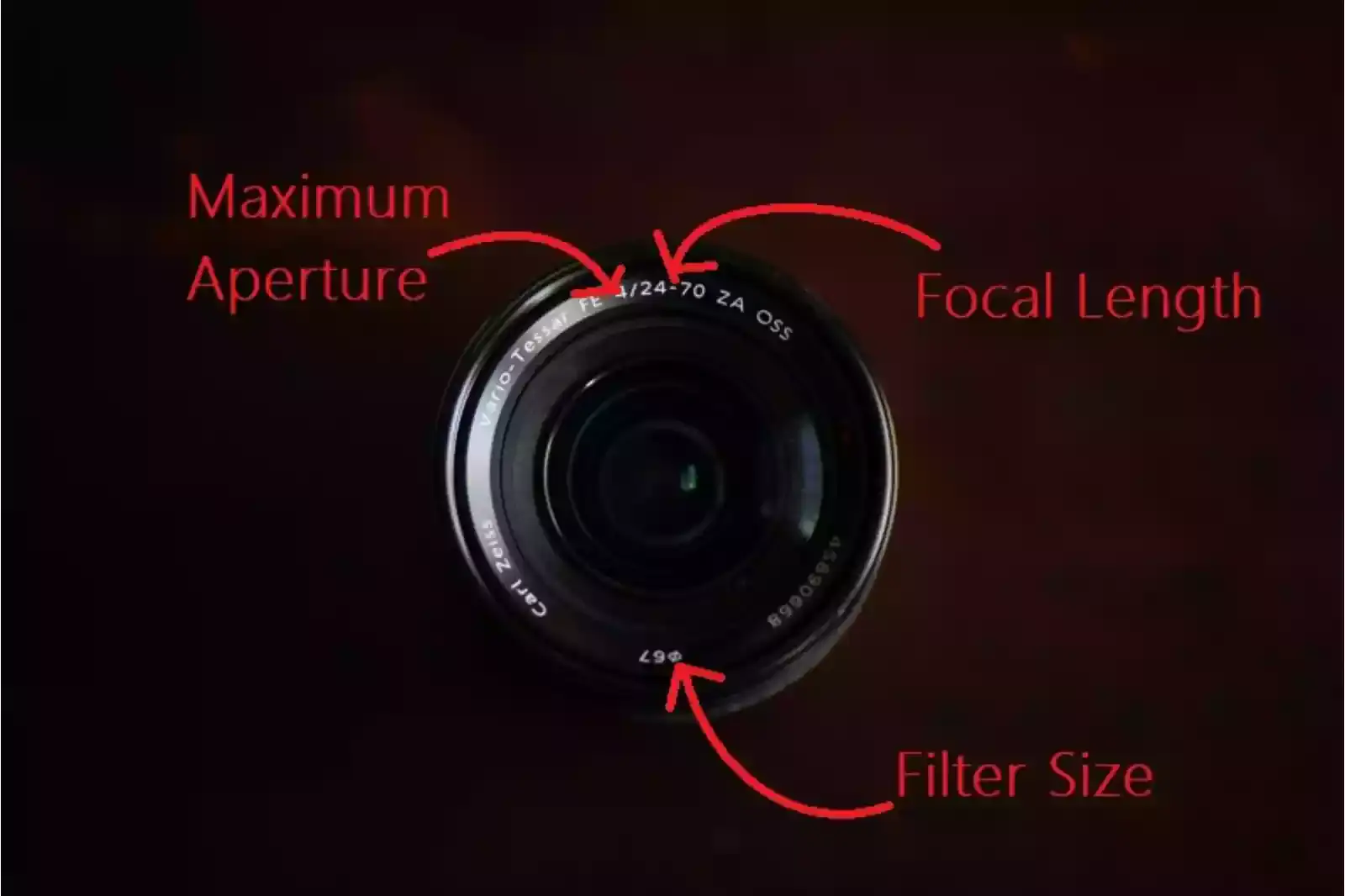
Be clear about what it signifies, though. It refers to the accepted method of naming names and the fact that you can learn a lot about a lens by looking up its name. The majority of the lenses are in the following way. Brand name, lens type, focal length (in mm), maximum aperture, and other lens features/abbreviations.
For instance, the "Nikon AF-S 24-70mm f/2.8 E ED VR" lens is what one of Nikon's professional zooms is officially known as. The "Canon EF 24-70mm f/2.8 L II USM" lens is Canon's comparable. The word's focal length and maximum aperture are the most crucial. In other words, the phrases "mm" and "f/number."
These figures are most closely connected to the kinds of pictures the lens will be able to take. (I'll have a complete piece on each and why they are so crucial later.) What about the abbreviations after the lens name?
They continue to be important because they show the extra information each lens provides. For instance, the Nikon lens's "VR" designation denotes "vibration reduction," stabilizing the lens for handheld photography.
However, the importance of these extra sentences is usually insignificant. Some of them don't even correspond to any specific attributes and are only used for marketing purposes (the "L" on a Canon lens indicates that it is one of Canon's premium lenses, for instance).
When working with specialized lenses, the rule that "mm and f-number matter most" is the crucial exception; when it comes to fisheye, macro, tilt-shift, and other types of lenses, the distinctive feature is more likely to be the driving factor in your decision to purchase the lens.
Here are Some of the Abbreviations Which Will Give you a Better Understanding
- AF
Older autofocus lenses require a physical connection between the camera body (where the motor is located) and the lens to focus on a subject. These lenses are identified by the abbreviation "AF." An internal "Silent Wave" motor is a characteristic of more recent AF-S lenses.
- AF-P
The AF-P lenses debuted at the start of 2016 and used a "stepping motor" similar to Canon's STM lenses. This type of motor has a significantly smoother action throughout the focusing operation and is much quieter than AF-S technology. As a result, AF-P is perfect for taking video since it prevents focus motor noise when zooming and maintains a smooth motion throughout.
- AF-D
Lenses with autofocus that provide distance data to the camera body. The identifier is no longer utilized because all current Nikkor lenses provide this information to the camera.
Therefore, technically speaking, all modern Nikkors are AF-D. Another instance where designation was far more significant was when the technology initially emerged, and several lenses in the lineup did not have this capability.
- EF-M
A brand-new lens format created especially for the EF-M mount Canon EOS M mirrorless camera system. EF-M lenses are made for APS-C sensor cameras, much like EF-S lenses are. However, they will only suit Canon EOS M cameras because of the lower flange focal distance (distance between the lens mount and film/sensor plane). Using the proper lens mount adapters, EF-S and EF lenses may be mounted on EF-M lens mounts; however, EF-M lenses cannot be installed on the EF mount.
- STM –
This autofocus motor, developed to reduce focusing noise and vibrations during video recording, has been progressively finding its way into inexpensive Canon lenses. The EF-M 22mm f/2 STM lens was the first to include STM.
The Stepper Motor is now included in every EF-M lens; however specific EF-S lenses have also received updates, such as the EF-S 18-55mm f/3.5-5.6 IS STM lens. Fly-by-wire focusing is a technique used by STM lenses, which implies that spinning the focus ring instructs the AF motor to move the elements rather than physically moving them.
- ZA
In terms of high quality, Zeiss Alpha lenses are on par with Sony's G lenses, which are Zeiss-branded lenses created particularly for Sony cameras. Different people have different viewpoints, but from what I can tell, ZA lenses are not created by Zeiss. Sony is still in charge of creating and producing these lenses, but only after Zeiss has given its strict approval of the optical design.
- DT
It stands for "Digital Technology" and designates lenses made for APS-C cameras. These lenses, like the Nikon DX, Canon EF-S, and Sigma DC lenses, do not fully enclose the 35mm sensor picture circle. DT lenses, however, may be attached to full-frame Sony cameras and operated in crop mode, thus converting a full-frame Sony camera into a camera with a reduced sensor.
There are many acronyms for lenses because each brand has its own, so if you want to know what a camera's name stands for, type it into a search engine, and you'll get the correct information about it.
What is Maximum Aperture?

The sorts of images you may shoot with your digital SLR camera may be constrained by the lens's maximum aperture. Not all lenses are made equal; some can open up far wider than others, and the wider-opening lenses can transmit a significant amount of light to the sensor.
Every photographic image depends on light. Therefore, the lighter the lens lets in, the more freedom you have to capture photos in any available light, from brilliant sunlight to dark twilight. Unfortunately, there is a financial issue: the price of a lens grows with how wide it opens. And there is a significant price difference.
Spending a few hundred dollars extra can get you a lens with a larger opening. Therefore, you should be sure that you actually NEED that large opening and that you'll exploit it frequently before reaching for your wallet. So let's discuss maximum aperture in greater detail and how it varies from lens to lens.
Aperture

Imagine that you are in a pitch-black room with a spherical window. You may change the window's size to allow in more or less light by turning a crank within the room. The amount of light that enters the room depends on how wide open the window is; if it is closed, a little beam of light enters.
Your lens' aperture operates similarly; it's a circular opening in the lens that you may adjust in size. You may progressively narrow the aperture of any lens. For instance, f/16 is a setting that may be used on any lens available today, independent of the manufacturer. Contrary to popular belief, no lens on the market can be opened up to f/1.4.
The maximum aperture is the widest that a lens can be opened. Although a lens's maximum aperture will be included in its name, you are not limited to using that aperture alone. You may always make the aperture narrower. Nearly all lenses have an f/16 minimum aperture; many also support f/22, f/32, and higher.
The minimum aperture is that. However, the maximum aperture is far more significant than the minimum aperture. That explains why the lens designation only lists the maximum aperture. Extremely narrow apertures, particularly f/22 and higher, start to blur your images and darken them more than you typically desire.
Depth of field –

As described, depth of field measures the amount of a picture that is out of focus from the main subject. In other words, how well-defined are the subject's foreground and backdrop? The distance to the subject, the focal length, and the aperture all have a significant role in the depth of field.
Most of the subject's foreground and backdrop will be out of focus when using a big aperture, such as one with an f-stop of F/2. This is frequently utilized in portrait photography, where the person should be the centre of attention.
Much more of the image will be in focus with a narrower aperture, such as an f-stop of F/11. In landscape photography, a large depth of focus is frequently used when the entire panorama is equally essential. The depth of focus will decrease as you go closer to the topic while rising as you get farther away. A lens with a shorter focal length will give you a deeper depth of field.
What is Focal Length?

The lens's focal length provides information about the angle of view and magnification it can record. The amount you can see in your photo depends on the angle of view. An expansive field of vision, for instance, will display more of the frame than one that is restricted.
Both the lens's name and the lens itself use the symbol mm (millimetre) to indicate the focal length. They are divided into different groups since there are various focal lengths available. These categories include telephoto, super telephoto, telephoto-normal, wide-angle, and ultra wide-angle lenses (from the broadest angle of view to the most narrow).
The distance between your glass and its focus is a consequence. As a result, lenses from various brands may have varying diameters even if they have the same focal length. For instance, the 50mm lens might be extremely long, thick, or tiny. If the mm number is smaller, your field of view will be larger (shorter focal length).
Your field of view will be increasingly restricted as the millimetre number increases, indicating that the focal length is longer. The technical definition of focal length is more sophisticated than the preceding explanation.
We are not lens experts! Because there are so many focal lengths to choose from, they are classified into several categories. These categories include telephoto, super telephoto, telephoto-normal, wide-angle, and ultra wide-angle lenses (from the broadest angle of view to the most narrow).
Focal Length and Camera Shake

When using longer focal lengths, there is another factor to consider that most people overlook until they are confronted with a problem. The blurriness or shakiness in your photo is referred to as image shaking. This is due to the vibration caused by pushing the shutter button on the camera to capture an image.
Longer focal-length lenses, such as telephoto lenses, are more prone to this problem. This is why investing in an image-stabilized lens is a great idea! Because each camera brand has its image stabilization technology, its lenses are labelled differently. Canon adds "IS" to the end of lens names to indicate the presence of this technology; Nikon adds "VR," Sony adds "OSS," and so on.
Although each manufacturer's stabilization technology is unique, in general, this system works by placing the components on a gimbal inside the lens, which counteracts any movement and maintains all of the levels of the parts.
To emphasize how serious the camera shake is at longer focal lengths, stabilization is often only accessible at longer focal lengths. Because it is optional, this feature has been less popular recently.
What is a Camera Sensor and How it Affects a Shot?

A camera's internal gear, called a sensor, collects light and transforms it into impulses that create images. Millions of photosites, or light-sensitive dots, make up sensors which capture what is viewed through the lens.
How much of this light is used to produce the image depends on the camera's sensor's size. Because a sensor can store essential data, larger cameras can fit more data and provide higher-quality photos than smaller ones. What you see via the viewfinder of your camera depends on its size.
While bigger sensors can catch far more of the picture, smaller sensors crop lenses. This full-frame image was captured using bigger sensors than standard 35mm film. Image size, depth of field, resolution, low-light performance, the physical size of a camera, and other factors are all influenced by the size of the camera sensor.
A bigger lens is needed to project an image onto a bigger sensor. Not to mention that a big sensor could require your camera to be more significant. Both of these factors may be troublesome and outright expensive, particularly if you're on the road or if your shooting style doesn't call for them.
Capabilities in Low Light
The resolution of your image is measured in megapixels, as was already said, but a higher number doesn't necessarily mean that it solves all of your problems. A larger sensor allows more photo sites and the ability to record low light settings compared to a smaller sensor.
Resolution and Image Quality
The resolution of a camera is measured in megapixels. The picture sites on the camera's sensor must be more significant to store more megapixels and deliver finer images.
Factor’s affecting Lens
You must focus on more than one aspect of what makes a lens excellent or terrible while ignoring others because many other aspects are at play. Here are a few crucial elements you should consider before making a purchase.
Lenses with particularly wide apertures are called superzooms. While compromise can take many forms, it typically entails lenses with lesser picture quality, more significant, heavier, or more expensive.
Sharpness
"sharpness," often referred to as "acutance," describes how clear an image appears. You'll be able to discern even the finest details and any micro-contrasts in a shot with enough sharpness.
This quality is strongly tied to the materials used to make your lens and its level of manufacturing excellence. It also relies on the camera parameters, such as the diaphragm's focal length, focus distance, and aperture. The photo's sharpness has not been applied uniformly throughout.
Frequently, the centre is sharper than the edges. Modern lenses' maximum apertures in the corners of the frame are the primary location where they can get out of focus. For the majority of photographers, this is scarcely important.
You'll probably get a little focus effect if you shoot at f/1.4. The sharpness of the corners of your lens is meaningless in such a scenario because they wouldn't be in any circumstance.
Flare
An unwanted artifact in the image may occasionally be visible when light is diffused or flared in a lens system, sometimes in response to intense light. Due to internal reflection and forward scatter from imperfections in the lens material, as well as other light dispersion caused by the imaging process itself, this happens.
Because they have more surfaces where internal scattering might occur, zoom lenses, and other lenses with several components usually display more lens flare. These methods differ from focused photography, which relies on light beams bent by the object being photographed.
Distortion
A certain kind of lens failure brings an optical phenomenon known as lens distortion. The absence of rectilinearity in the camera results in lens distortion. Describe rectilinearly. In photography, rectilinear refers to the lens's capacity to "preserve" the straight aspects of structures, such as walls, doors, and other objects, so they seem straight in the image.
Simply, it prevents curved objects from bending into straight-looking ones. Wide-angle lenses, for example, are more prone to stretch and distort pictures to capture all viewpoints. Some straight features that should seem straight in the image instead wind up looking warped and bent.
Sample variation
Another element impacting image quality is sample variation or the idea that all copies of a particular lens fall within the same range of picture quality. It would not be enjoyable to learn that your lens isn't nearly as beautiful after reading a favourable internet review of one.
For specific lenses, the sample variation varies less than for others. We try to account for this in our evaluations by testing various iterations of the same lens, but there is also a lot of chance involved. Most reviewers won't notice if one in ten copies of a lens is flawed, but a sizeable percentage of buyers will.
Chromatic aberration
A frequent optical issue called chromatic aberration, commonly referred to as "color fringing" or "purple fringing," arises when a lens cannot focus all color wavelengths onto the same focal plane or when various color wavelengths are concentrated at different locations in the focal plane.
Lens dispersion, which results from different hues of light travelling through a lens at various speeds, causes chromatic aberration. As a result, especially in high-contrast settings, the image may appear blurry, or distinguishable colored edges (red, green, blue, yellow, purple, or magenta) may emerge around objects.
Some Best Lenses you can Consider as a Beginner
- Canon EF-S 35mm f/2.8 Macro IS STM
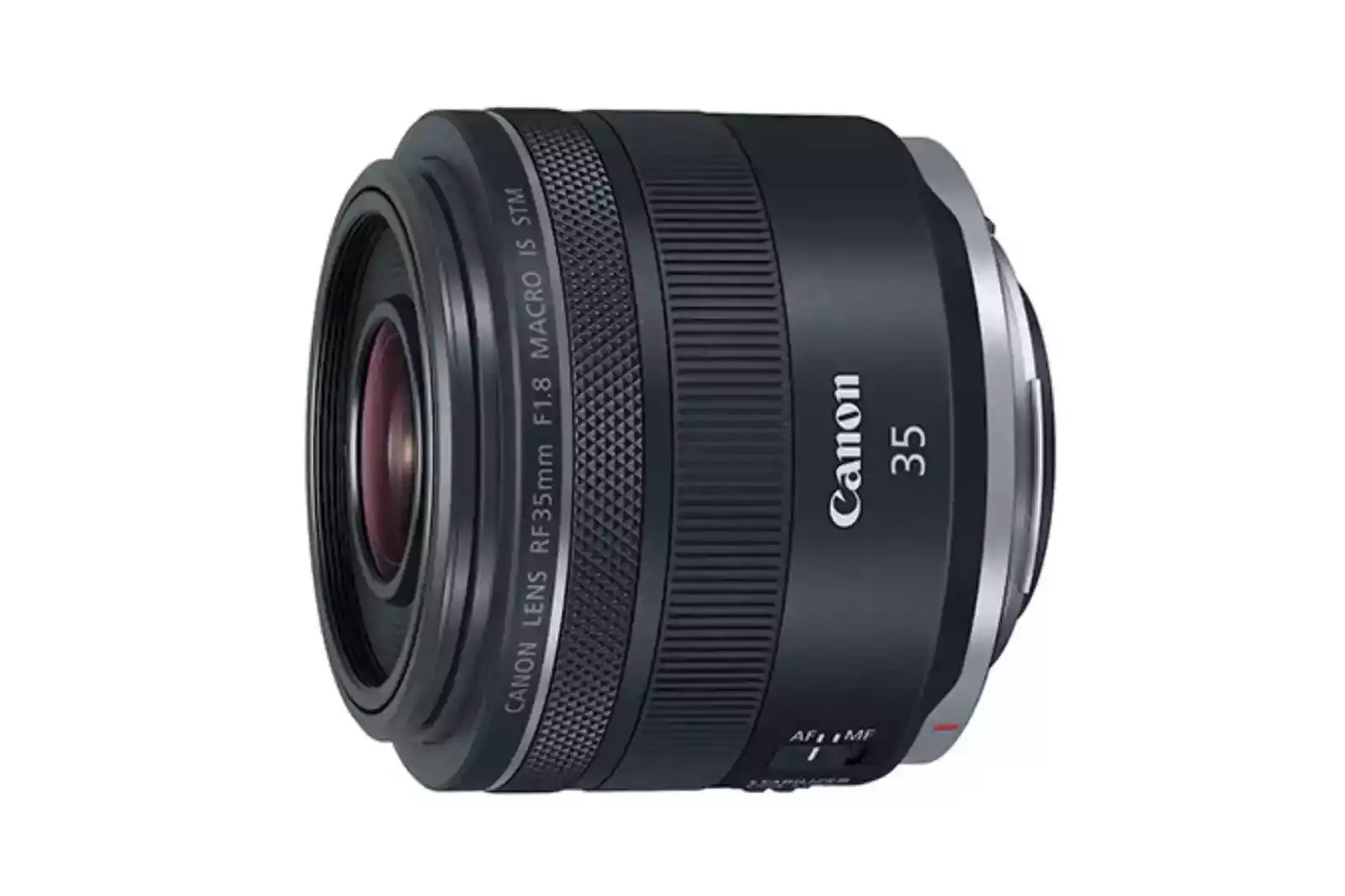
Up to life-size magnification may be captured with the EF-S 35mm f/2.8 Macro IS STM for breathtaking detail. It has a built-in Macro Lite, a first for EF-S lenses, allowing you to choose how to light your close-up pictures. For remarkable versatility, you may separately regulate the right and left lighting and adjust the intensity (bright and dim).
For spectacular up-close details of even the most miniature objects, including food, insects, flowers, still life, and anything else you wish to fill the frame, the EF-S 35mm f/2.8 Macro IS STM can zoom in up to life-size.
The tapered shape of the EF-S 35mmf/2.8 Macro IS STM allows you to get up and personal with even tiny subjects, filling the frame with stunning, life-sized details. Because of the lens' innovative design, which helps to minimize the total size and weight of the lens, it has a small and lightweight body that makes it convenient to carry when taking pictures on the move.
- Canon EF-S 24mm f/2.8 STM

The Canon 24mm offers so little resistance and is so lightweight (just 125 grams) that it becomes your go-to lens. After all, even if those significant, clunky devices could capture beautiful images, it isn't easy to choose anything else when your little lens also produces beautiful images.
One of the best features, offering experienced and professional photographers the freedom to work with their focus without having to turn off autofocus, is the full-time manual focus (even in AF mode). With this wide-angle lens, you can shoot stunning portraits and still-life pictures since it can focus on objects up to six inches in size.
- Nikon AF-S 50mm f/1.8G
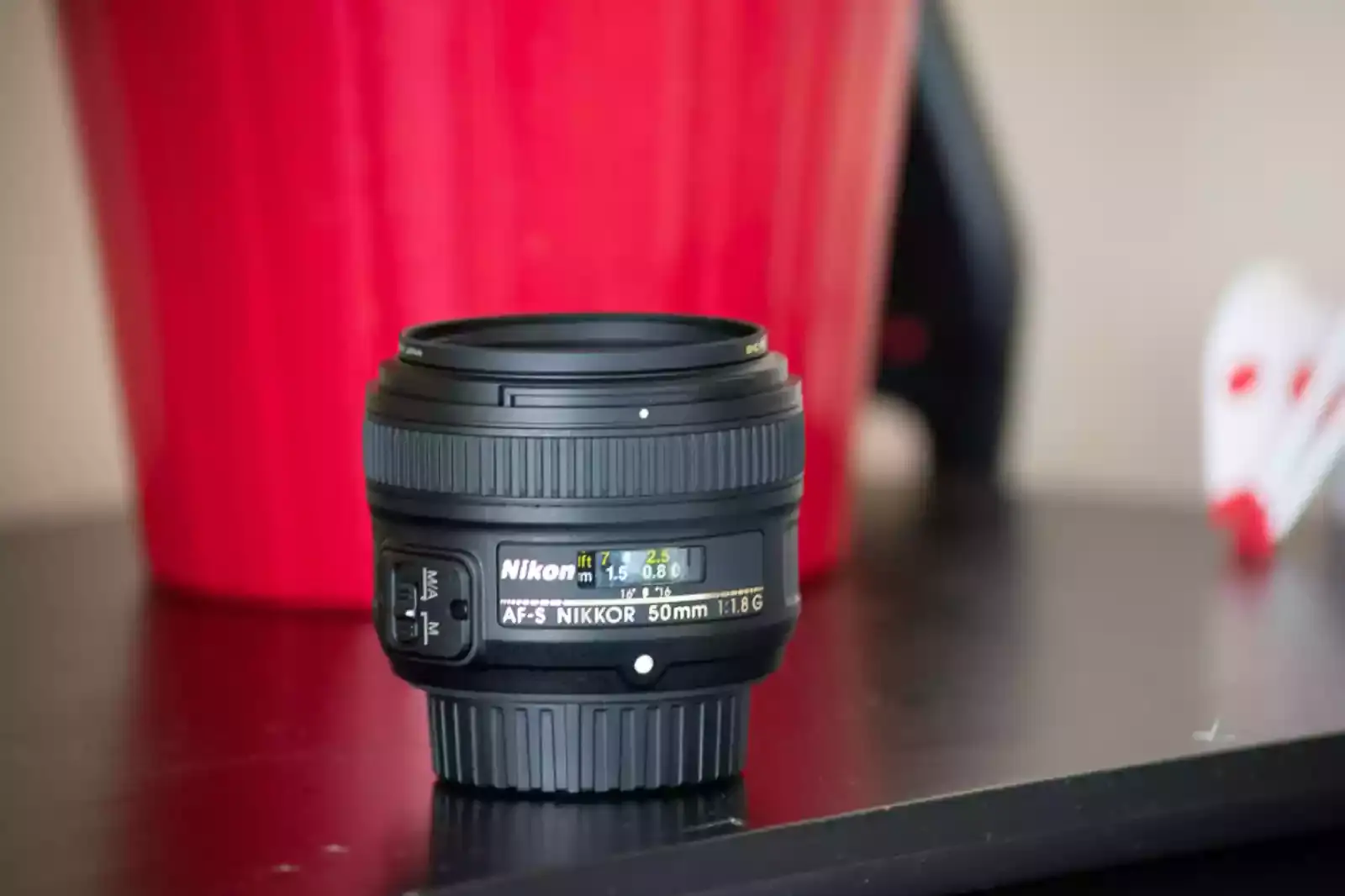
Luminous In Any Light Obtain excellent outcomes in dim light. You never know when a gorgeous, bright day will become overcast and wet, making this standard compact lens an excellent travel companion.
The AF-S NIKKOR 50mm f/1.8G will capture even low-light scenarios with dazzling brightness because of its fast f/1.8 aperture. A lovely background blur Increases the depth of the field's naturalness.
The AF-S NIKKOR 50mm f/1.8G produces stunning, natural background blur (Bokeh) at its more comprehensive aperture settings, whether you're photographing people, food, or nature indoors or outdoors. Additionally, its 50mm focal length makes it easy to add realistic perspective to your pictures.
Take note of each detail. Take consistently crisp portraits. The AF-S NIKKOR 50mm f/1.8 Aspherical G's Lens Element (AS) practically eliminates coma and other aberrations. At the same time, Nikon's Super Integrated Coating (SIC) improves light transmission efficiency, gives greater color constancy, and reduces flare.
SWM Nikon's Silent Wave Motor, a significant advancement in AF lens technology, employs ultrasonic (inaudible) vibrations to focus the lens rather than a gear system, resulting in very smooth, silent, and accurate autofocus performance.
- Nikon 35mm f/1.8G AF-S DX:
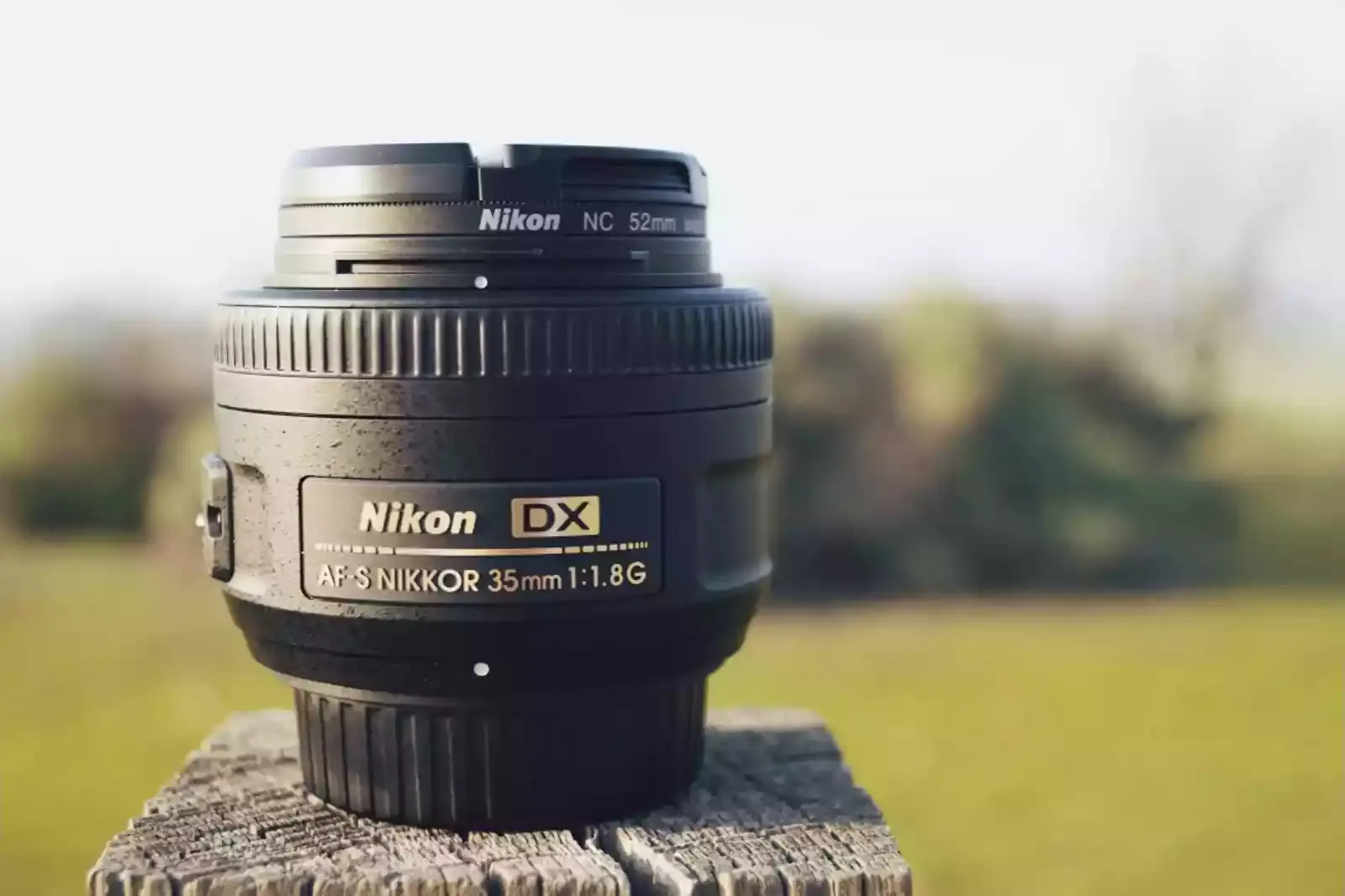
Images that are virtually lifelike to the eye. Let's face it: even though your photos are stunning, there are still occasions when you see a sunset and wish you could somehow capture it. The Nikon 35mm can generate incredibly lifelike photographic images, even if it can't create a wireless connection to your brain.
How? When mounted on a DX-format camera body, this 50mm lens may be used by photographers to create photographs with an angle similar to what you see with your own eyes.
Although no lens will ever be able to capture images at "eye level," as you may be thinking, it's still a step in the right direction. Convenience is an undervalued quality of a lens like the Nikon 35mm. Yes, it can provide stunning photographs, but only if your lens is portable, reasonably priced, and lightweight.
You will only use it as regularly as you usually might if it meets all of those requirements. Unfortunately, this results in many lenses needing the recommended amount of wear. However, you won't have any problem adding this Nikon lens to your toolset for trip photography. It is transportable, easy to use, and light enough to make your next trip comfortable.
Even while sharp, high-resolution photographs might seem inevitable in a lens of the calibre of the Nikon 35mm, we at Adorama feel compelled to acknowledge them. Additionally, the autofocus will run "in the background" and provide astounding precision, consistency, and raw speed thanks to the silent Silent Wave Motor.
- Nikon AF-S DX 12-24mm f/4G IF-ED
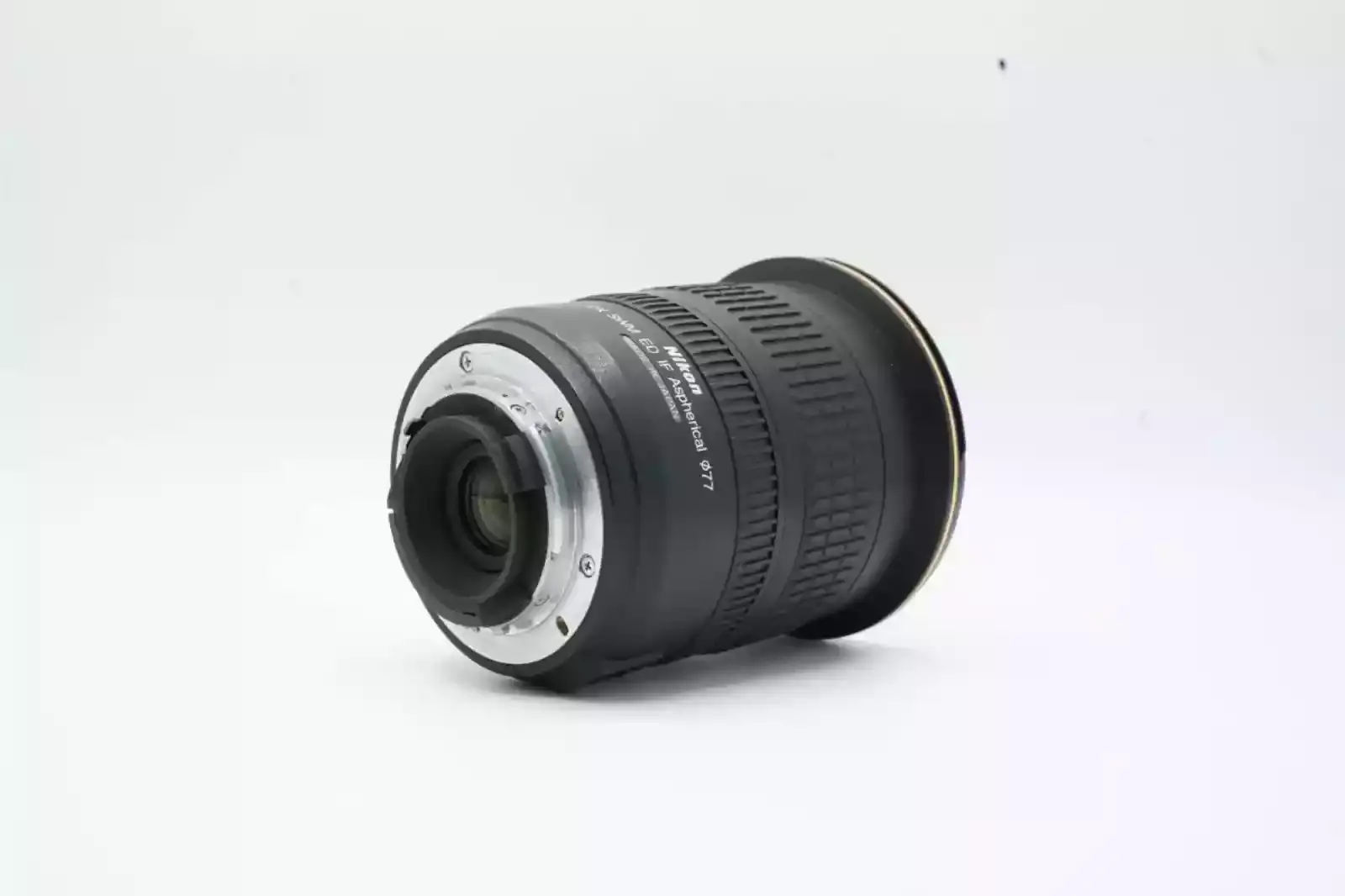
Ultra-wide-angle fixed-aperture zoom with high performance. This f/4 fixed-aperture zoom lens produces constant exposure, pin-sharp shots, and rich colors, making it the perfect choice for capturing enormous building exteriors, cramped interiors, and expansive natural landscapes.
The AF-S DX Zoom-NIKKOR 12-24mm f/4G IF-ED is a well-liked option for travel, architectural, and landscape photography, as well as setting shots when filming HD video because it is designed for DX-format cameras.
Dramatic stills and HD videos with great wide-angle perspectives The AF-S DX Zoom-NIKKOR 12-24mm f/4G IF-ED offers a dramatic wide-angle viewpoint and tack-sharp, color-rich photos whether photographing dynamic interior spaces, concrete building exteriors, or magnificent natural landscapes.
The AF-S DX Zoom-NIKKOR 12-24mm f/4G IF-ED is a superb travel and adventure companion since it is tough, light, and adaptable. Advanced Nikon lens technology delivers superior performance. The AF-S DX Zoom-NIKKOR 12-24mm f/4G IF-ED combines an optical design suited for modern DX-format Nikon D-SLR camera sensors with a more extensive range of vision.
Smaller lens diameter and ideal picture quality from the centre to the edges are made possible by the lens's smaller image circle, which is the size of the image projected onto the sensor. Out-of-focus elements look more natural because of its rounded diaphragm, and its Extra-low Dispersion (ED) glass guarantees exceptional sharpness and color performance.
Many factors make a lens excellent or terrible. Sharpness is strongly tied to the materials used and its level of manufacturing excellence. Compromise can take many forms and come in different forms depending on the lens - larger, heavier, or more expensive.
A certain kind of lens failure brings an optical phenomenon known as lens distortion. In photography, rectilinear refers to the lens's capacity to "preserve" the straight aspects of structures, such as walls, doors, and other objects, so they seem straight in the image.
FAQ's
How do I know what lens to use on my camera?
To know what lens to use on your camera, consider the type of photography you are doing, the distance between you and the subject, and the lighting conditions to determine the focal length and aperture needed for the shot.
What are the 4 types of camera lens?
The 4 types of camera lenses are prime lenses, zoom lenses, wide-angle lenses, and telephoto lenses. Prime lenses have a fixed focal length, zoom lenses allow you to change the focal length, wide-angle lenses capture a wider field of view, and telephoto lenses allow you to zoom in closer to your subject.
What is ISO in camera?
ISO in camera refers to the sensitivity of the camera's image sensor to light. It controls how bright or dark the image appears and is measured in numbers, with higher numbers indicating higher sensitivity to light.
Is 18-55mm lens good for beginners?
Yes, an 18-55mm lens is a good lens for beginners as it is versatile and can be used for a wide range of photography styles, including portraits, landscapes, and everyday snapshots. It is also relatively affordable and lightweight, making it a good option for those who are just starting out in photography.
What is mm in camera?
In camera, mm (millimeter) refers to the focal length of the lens, which determines the angle of view and magnification of the subject. It measures the distance from the lens to the camera's image sensor, and affects the image's perspective, depth of field, and compression.
What type of lens is CCTV?
The type of lens used in CCTV cameras can vary, but common types include fixed, varifocal, and zoom lenses.